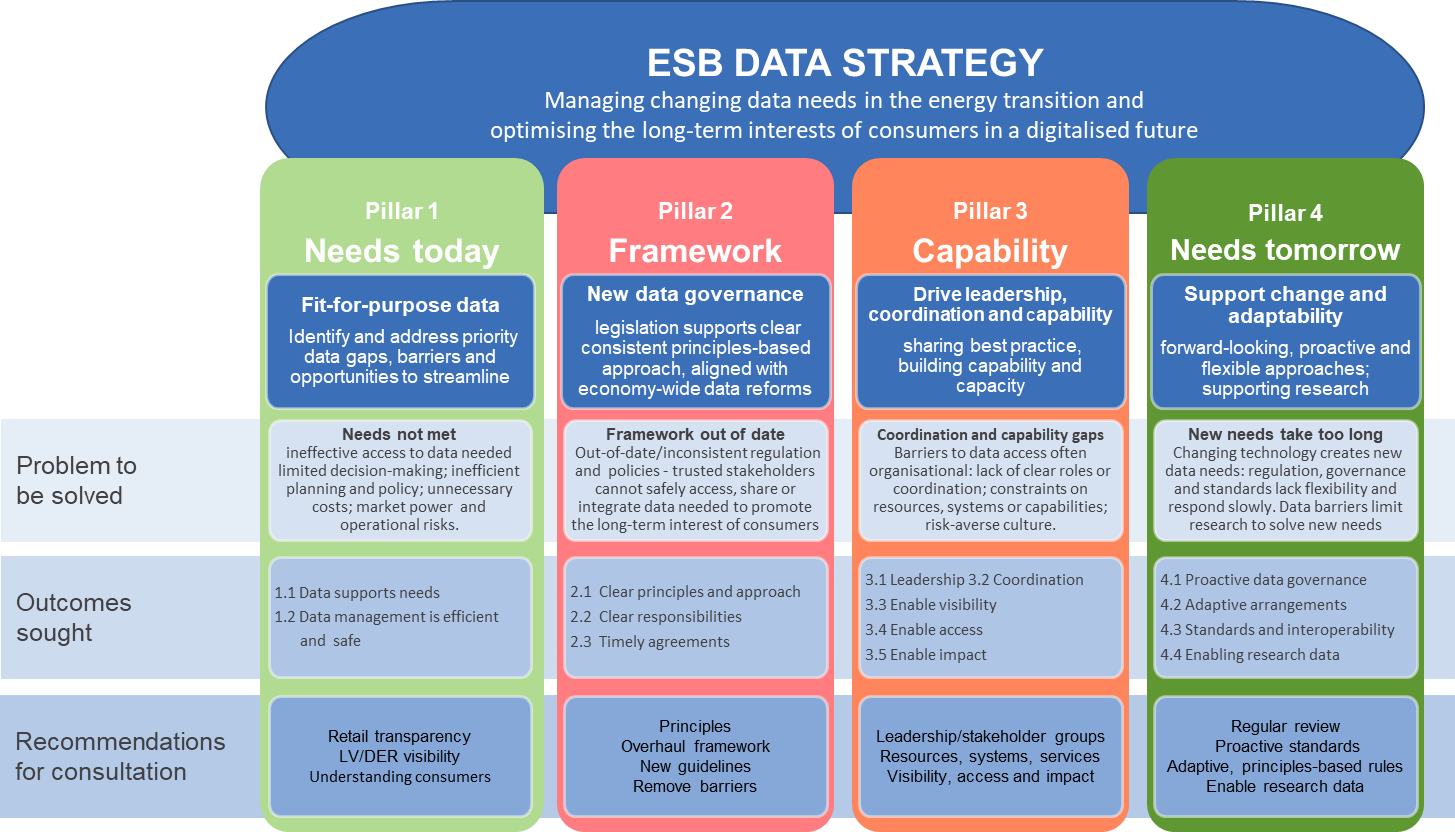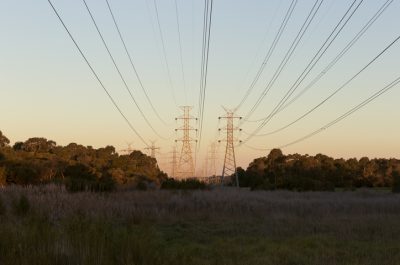Data is easy? Computer says no
In late October the Energy Security Board (ESB) released a consultation paper on a Data Strategy for the NEM. It covers a huge range of data-related energy issues such as customer protections, clarifications of legal interpretations, data sharing, consumer data rights and many others. We think it is a great first step in taking a holistic view of how data should be managed in the National Electricity Market (NEM), but it highlights the fact there’s much more work to be done.
Figure 1: Summary of the ESB Data Strategy
At a glance
Like many reports hitting the time-poor energy industry, the data strategy report stands at a hefty 142 pages (including appendices) resulting in 32 recommendations – which gives some context to how broad this review was. The following is a list of some broad themes in the key recommendations that we identified.
Recommendations 1 – 5: retail and market transparency
These mainly look at retailers and the importance of making the market more transparent for the Australian Energy Regulator to ensure the system is working for consumers.
Recommendations 6 – 10: understanding customers and demand
These look at how energy demand and supply is changing at the customer level and how more data might support research for a range of purposes such as improving the industry’s knowledge of energy equity and building analytical capabilities in networks.
Recommendations 11 – 17: LV and DER visibility
Data is needed for visibility and there is a chronic shortage of both within the industry. Another complication is the difficulty/ambiguity in sharing data among stakeholders for research and transparency. The rules currently do not promote this. Interestingly, the Data Strategy suggests several findings which we identified in our latest report on Network Data[1] such as a need to pass minimum smart meter data to networks.
Recommendations 18 – 22: future vehicles to progress data principles
The ESB considers what might be the best vehicle to progress the data discussion and its suggestion is to establish a data leadership and coordination (DataLAC) group. The ESB outlines some principles this group would follow and some high-level mechanisms it might help guide and operate.
Recommendations 23 – 32: how we manage data in the future
These recommendations are future-focused and by nature vaguer on the details. After doing a similar crystal ball gazing exercise[2] on a roadmap to smarter networks – I can relate. There is always going to be some wriggle room depending on how the system evolves and how quickly new regulations and technology come online.
Learnings from the Data Strategy
This report touches on many important issues, but it’s a lot to process (even for energy boffins). Our key takeaways were:
- A strategy is great, but we need tactics – If a strategy is designed to “win the war” then tactics are how we fight the battles. This means we need to figure out what actions the people on the ground need to take now to achieve specific goals and move the dial forward as an industry.
- Leveraging international systems thinking – If the ESB’s data strategy is the local favourite, then its big brother is the UK’s Energy Systems Catapult. The catapult is a comprehensive end-to-end redesign of system/data architecture for energy in the UK. Australia shouldn’t take this work as gospel, but there’s some good stuff in it that we can leverage.
- Many of the recommendations have cost implications for customers – It’s important to identify ideal outcomes, but it is equally vital to establish what’s justified and possible – because customers ultimately pay for it. This also means closely engaging with industry stakeholders such as the networks that deliver the outcomes and the customers who foot the bill.
- There’s a lot on everyone’s plate right now – The industry is already facing massive regulatory, technical and commercial shifts, not least the cost of managing DER and the ESB’s own Post 2025 market design project. That is not to suggest this data strategy isn’t important – because it is – but we need to make sure that we are focussed on identifying what absolutely needs to be done and leaving the rest for later.
- Let’s avoid the duplication of working groups and committees – Working groups are great ways to engage many people and get things done, but let’s not mistake more groups with more output. Many in the industry are seeing diminishing returns with an ever-growing list of working groups (and finding the time in calendars to attend them). The DataLAC has an opportunity for some consolidation with the ESBs proposed Governance of DER technical standards as well as several other data related working groups that exist now.
To sum up, the ESB has done a great job at articulating some of the complex data that the energy industry faces and identified some opportunities for improvements.
The challenge now is to engage with stakeholders to form a plan that identifies clear actions and milestones that can be incorporated into individual businesses and organisations over the short, medium and longer term. We and our members look forward to working with the ESB on the art of the possible and getting the data plan that customers can afford.
[1] https://www.energynetworks.com.au/resources/reports/2020-reports-and-publications/data-opportunities-for-smarter-networks/
[2] https://www.energynetworks.com.au/resources/fact-sheets/smart-grid-roadmap/



